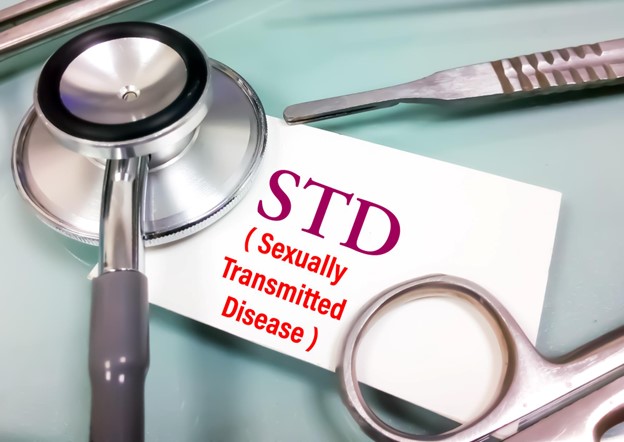Sexually transmitted diseases (STDs) are infections passed from one person to another through sexual contact. Understanding STDs is crucial because they affect both individual health and public well-being. Learning about these diseases helps us keep ourselves and each other healthy. Society often hesitates to talk about sexually transmitted diseases openly. This stigma makes it hard for people to learn about safe practices and seek help when needed.
STDs are a recurring health issue that affects millions yearly. Boosting awareness is vital to reduce this problem. Open discussions can help break down the walls of silence and shame that surround this important topic. As we better understand these diseases, we empower ourselves and others to make informed choices and lead healthier lives.
Types and Symptoms of Common Sexually Transmitted Diseases
Sexually transmitted diseases come in various types. Here’s a simple breakdown:
- Bacterial STDs: These are caused by bacteria and include diseases like Chlamydia and Gonorrhea. They’re usually treatable with antibiotics if caught early.
- Viral STDs: Caused by viruses, these include HIV/AIDS, Human Papillomavirus (HPV), and Herpes. They often have no cure, but treatments can manage symptoms and maintain your health.
- Parasitic STDs: These include infections like Trichomoniasis, which are caused by parasites.
The symptoms of sexually transmitted diseases can vary greatly and sometimes might not show up at all. But here are some common signs to watch for:
- Painful urination
- Sores or bumps on the genitals or in the oral or rectal area
- Unusual discharge from the penis or vagina
- Rash
- Fever, body aches, or swollen lymph nodes
It’s crucial to remember that many sexually transmitted diseases can be sneaky. You might not notice any symptoms, which makes regular check-ups essential. Early detection is key to preventing the long-term effects of sexually transmitted diseases and ensuring effective treatment. Understanding types of sexually transmitted diseases and their symptoms helps in early intervention.
Transmission, Risk Behaviors, and Prevention
Understanding how are sexually transmitted diseases spread is key to protection. STDs mostly pass from one person to another during sexual activities like vaginal, anal, or oral sex. However, some misconceptions suggest that you can get STDs through casual contact like hugging or sharing utensils—this is not true.
Certain behaviors can increase the risk of getting an STD:
- Having unprotected sex
- Having multiple sexual partners
- Using intravenous drugs with shared needles
To lower your risk, consider these tips:
- Use condoms or dental dams during every sexual encounter.
- Get vaccinated against diseases like HPV and Hepatitis B.
- Get tested regularly, especially if you have multiple partners.
- Engage in open communication with partners about sexual health and history.
The role of prevention of STDs education is massive. By learning about safe practices, we can protect ourselves and our partners. Make sexually transmitted disease prevention education part of your life. Attend workshops, read materials, and talk openly about it with friends and partners. This not only protects you but fosters knowledge and understanding in your community.
Treatment Options and Overcoming Stigma
Treating sexually transmitted diseases depends on the kind of infection. Treatments differ based on whether the STD is bacterial, viral, or parasitic. Here’s a simple guide:
- Bacterial STDs: Antibiotics can usually clear these up quickly if you follow the treatment plan.
- Viral STDs: There is no outright cure, but medications can help manage symptoms and lower the chance of spreading the virus.
- Parasitic STDs: Prescription creams or oral medication can treat these infections effectively.
Overcoming the stigma attached to sexually transmitted diseases is crucial for mental well-being. Many people might feel ashamed or isolated, but having STDs doesn’t define you. Mental health support and community resources are available to help overcome this stigma.
Proactive steps in sexual health management are vital. Complete all treatments as prescribed to avoid any complications. Communicate openly and honestly with partners. This helps in managing potential risks and promotes a healthy, trusting relationship.
Conclusion and Call to Action
In summary, gaining knowledge about sexually transmitted diseases empowers you to stay healthy. Regular health checks, practicing safe sex, and fostering prevention of STDs education can help protect you and others. Reducing the stigma around STDs is also essential for enhancing the mental and physical well-being of those affected.
Let’s talk openly, educate ourselves, and support a stigma-free environment to effectively handle these common health challenges. Doing so not only impacts us but also contributes to a healthier society at large.
In summary, understanding sexually transmitted diseases empowers you to protect your health and that of others. Regular check-ups, safe sex practices, and comprehensive STD education play a crucial role in prevention and well-being. Reducing the stigma surrounding these conditions enhances both mental and physical health. Let’s engage in open conversations, educate ourselves, and foster a stigma-free environment to address these challenges effectively—making our communities healthier overall.
For personalized advice and care, consult Nakshatra Hospitals today!


